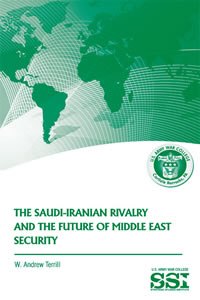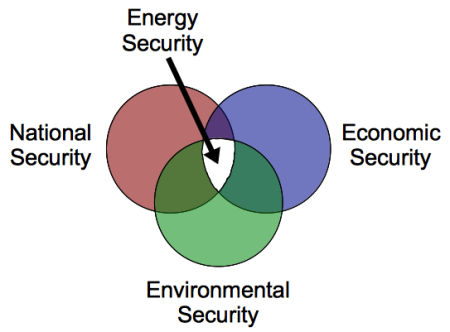No one needs reminding that the global security environment is volatile. Nihilistic groups mount an existential threat to U.S. interests around the world. Responding to unpredictability requires careful analysis and thoughtful strategy. GPO makes available two such policy-oriented reports from the U.S. Army War College, Strategic Studies Institute (SSI).
Iraq’s Shia Warlords and Their Militias: Political and Security Challenges and Options
 The battleground in the fight against ISIS is like shifting sands. Shia militias and their commanding warlords are reordering the power balance. Embedded in Iraq’s security system and U.S. military operations, militia in campaigns against ISIS present a dimension of complexity for policy interests on all sides.
The battleground in the fight against ISIS is like shifting sands. Shia militias and their commanding warlords are reordering the power balance. Embedded in Iraq’s security system and U.S. military operations, militia in campaigns against ISIS present a dimension of complexity for policy interests on all sides.
This SSI assessment posits that emergent Shia militias “have become for Washington at least co-belligerents in what one can justly term the ISIS War.” Emboldened during the political-military morass of the post-Saddam early 2000s, they hold close ideological ties to Iran and hostility toward U.S. personnel. At the same time they fill the Iraqi police force’s need for boots-on-the-ground, militias are increasingly legitimized in the Shia community. Meanwhile, confrontation with counterterrorism allies is a very real possibility.
Assessing Egyptian Public Support for Security Crackdowns in the Sinai
 Terrorist groups have a foothold in Egypt’s strategically important Sinai Peninsula. Most citizens support the Egyptian government’s use of hard-hitting tactics to stomp out extremist groups. Expert assessment of Egyptian public opinion of the crackdown shows how the counterproductive desire for stability makes “more terrorist recruits out of disaffected Bedouin youth than would otherwise be the case.” There’s a very real worry that this “very complicated piece of territory” is exporting extremist brutality to the mainland.
Terrorist groups have a foothold in Egypt’s strategically important Sinai Peninsula. Most citizens support the Egyptian government’s use of hard-hitting tactics to stomp out extremist groups. Expert assessment of Egyptian public opinion of the crackdown shows how the counterproductive desire for stability makes “more terrorist recruits out of disaffected Bedouin youth than would otherwise be the case.” There’s a very real worry that this “very complicated piece of territory” is exporting extremist brutality to the mainland.
This publication makes the case for the U.S. military to provide sensible, sophisticated counterterrorism training to Egyptian counterparts. Bilateral U.S.-Egyptian relations would be best served by policies that effectively rid the Sinai of radical Islamists while boosting human and infrastructure development.
In complement to the publications listed above, here are two broader examinations of radicalized armed groups and global security implications.
 New Approaches to Nonstate Armed Actors
New Approaches to Nonstate Armed Actors
Leading experts discuss the international community’s struggle to “confront, counter, and engage” nonstate violent groups. In the intro to this joint Marine Corps University Press and the Middle East Institute publication, editor Kenneth H. Williams states “for as long as governments have existed, groups have been forming to oppose them.”
 Armed Groups: Studies in National Security, Counterterrorism, and Counterinsurgency
Armed Groups: Studies in National Security, Counterterrorism, and Counterinsurgency
A U.S. Naval War College edited collection of scholarship, opinion, and context related to the influence of assorted armed groups on national security. Editor Jeffrey H. Norwitz argues that “armed groups are merely one vestige of mankind’s struggles in an increasingly smaller world.”
HOW DO I OBTAIN THESE PUBLICATIONS?
Shop Online Anytime: You can buy eBooks or print publications —with FREE Standard Shipping worldwide— from the U.S. Government Online Bookstore at http://bookstore.gpo.gov.
- Click here to purchase Iraq’s Shia Warlords and Their Militias: Political and Security Challengess and Options
- Click here to purchase Assessing Egyptian Public Support for Security Crackdowns in the Sinai
- Click here to purchase New Approaches to Nonstate Armed Actors
- Click here to purchase Armed Groups: Studies in National Security, Counterterrorism, and Counterinsurgency
- Click here to browse our Counterterrorism collection
Shop our Retail Store: Buy a copy of any print editions from this collection at GPO’s retail bookstore at 710 North Capitol Street NW, Washington, DC 20401, open Monday–Friday, 9 a.m. to 4 p.m., except Federal holidays, Call (202) 512-0132 for information or to arrange in-store pick-up.
Order by Phone: Call our Customer Contact Center Monday through Friday, 8 am to 5:30 pm Eastern (except US Federal holidays). From US and Canada, call toll-free 1.866.512.1800. DC or International customers call +1.202.512.1800.
Visit a Federal depository library: Search for U.S. Government publications in a nearby Federal depository library. You can find the records for most titles in GPO’s Catalog of U.S. Government Publications.
About the author: Our guest blogger is Chelsea Milko, Public Relations Specialist in GPO’s Public Relations Office.




 Posted by Trudy Hawkins
Posted by Trudy Hawkins 






















